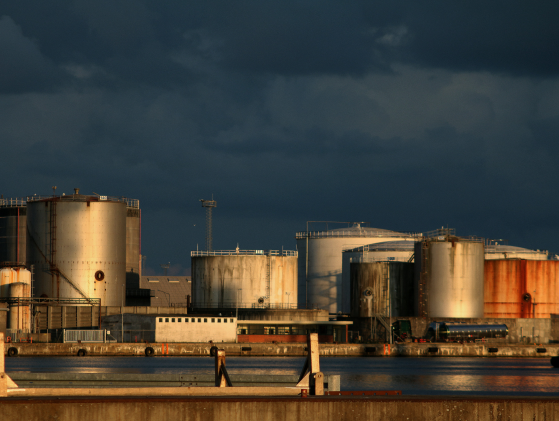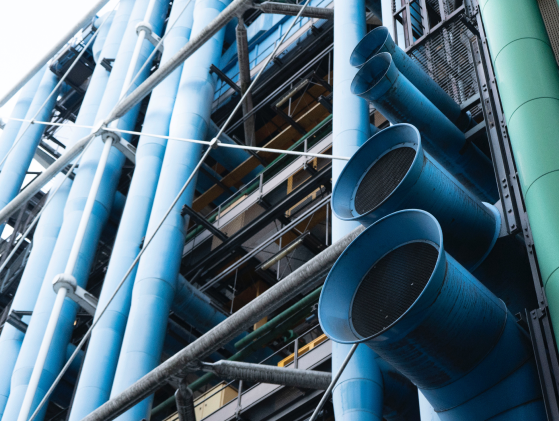As we embark on 2023, the global oil and gas sector stands at a pivotal crossroads. Confronted with an array of geopolitical shifts – from the ongoing repercussions of Russia’s invasion of Ukraine to fluctuating alliances and trade dynamics – the industry faces a landscape rife with complexity and opportunity. Concurrently, economic uncertainties, including inflationary pressures and shifting market demands, are influencing investment strategies and operational approaches.
Moreover, a profound and accelerating shift towards cleaner, more sustainable energy sources is compelling the industry to innovate and adapt. This transition, driven by both policy decisions and consumer demand, is not only influencing the types of energy being produced and consumed but is also reshaping operational and business models across the sector. From exploration and extraction (upstream) to refining, distribution, and retail (downstream), every segment of the oil and gas value chain is being reevaluated and transformed.
This period of transformation and adaptation is setting the stage for a year that could redefine the oil and gas industry for decades to come, presenting both formidable challenges and unprecedented opportunities.

The repercussions of Russia’s invasion of Ukraine have been profound for the global oil and gas sector. This conflict has led to significant disruptions in energy supply chains, with many countries re-evaluating their dependence on Russian oil and gas. The reshuffling of alliances and trade agreements has prompted nations to seek new energy partners, accelerating efforts to diversify energy sources. For instance, European countries have increased their imports of LNG from the U.S. and the Middle East, while also boosting investments in renewable energy sources.
The oil and gas industry is facing considerable economic uncertainties, primarily driven by global inflation and shifting interest rates. These economic factors are influencing oil prices and making investment decisions more complex. The industry must navigate these challenges while maintaining profitability and operational efficiency. For example, inflation has led to increased costs for drilling and refining operations, impacting the bottom line of many companies. In response, some firms are tightening their budgets and prioritizing projects with the highest potential returns.

Upstream Opportunities
The global upstream sector of the oil and gas industry experienced a significant boost in 2022, with an unprecedented generation of free cash flows estimated at $1.4 trillion. This remarkable financial performance has presented a strategic crossroad: should the focus remain on shareholder returns, or shift towards reinvesting in hydrocarbon projects?
In 2023, we’re witnessing this sector’s response. The industry is poised for an 11% increase in upstream investments, totaling around USD 528 billion. This level of investment, the highest since 2015, is not just a response to current market conditions, but a strategic move to ensure future supply security and to meet the growing global demand for energy. This reinvestment could signal a renewed commitment to exploring and developing new oil and gas reserves, while also balancing the need for profitability with the global demand for affordable and reliable energy sources.
The significant increase in free cash flows in the global upstream oil and gas sector in 2022 can be attributed to a combination of factors:
- High Oil Prices: The year 2022 saw elevated oil prices, partly due to increased global demand as economies recovered from the COVID-19 pandemic and partly due to supply constraints exacerbated by geopolitical tensions, notably the Ukraine conflict.
- Operational Efficiency: Many companies streamlined operations and reduced costs, improving profitability.
- Strategic Capital Discipline: Firms focused on capital discipline, prioritizing cash flow generation over expansion, leading to more efficient use of resources and higher cash reserves.

Oil Demand Growth and Clean Energy Transition
While the demand for oil is still on an upward trajectory, it is growing at a notably slower rate. By 2028, it is projected to reach around 105.7 mb/d, a pace tempered by the global shift towards renewable energy and more efficient fuel technologies. This trend is particularly influenced by increased investment in petrochemical feedstock and the burgeoning air travel sector, which continue to drive oil consumption, albeit at a moderated rate.

Concurrently, the clean energy transition is accelerating. Oil and gas companies, bolstered by favorable policies and significant cash flows, are progressively channeling investments into clean energy initiatives. However, the trajectory of this transition remains fluid, influenced by a myriad of factors including technological advancements, regulatory changes, and market dynamics. This ongoing shift reflects a broader industry movement towards sustainability, balancing traditional energy demands with the imperative for environmental stewardship.
Geopolitical and Economic Challenges
The oil and gas industry continues to navigate through a complex web of geopolitical and economic challenges. The ongoing war in Ukraine has significantly impacted global energy markets, reshuffling trade flows and intensifying the urgency to secure stable energy supplies. Coupled with this is the pressure from rising inflation, further complicating the economic landscape for the industry.
Downstream Dynamics
Downstream, refineries are facing their own set of challenges. A potential downturn in demand, fueled by recession concerns and a growing global refining capacity, is poised to reshape the refinery landscape. U.S. refiners are particularly focused on maintaining their core capacities while adapting to the emerging trend of renewable fuel production, reflecting a strategic pivot in response to changing market demands and a broader industry shift towards sustainability.
The downstream refining sector is undergoing significant changes due to fluctuating demand patterns and the shift towards renewable fuels.
Globally, refineries are adjusting to a potential downturn in oil demand, driven by economic downturn fears and a rise in global refining capacities. This scenario is compelling refineries to optimize their operations for efficiency and flexibility.
Simultaneously, there’s a notable pivot towards renewable fuel production. Traditional refineries are increasingly integrating biofuel production into their operations. For instance, some U.S. refineries have started to convert portions of their operations to produce renewable diesel, a trend seen as a strategic response to both market demand and sustainability goals. These adaptations are not only reshaping the operational landscape of refineries but also aligning them with evolving energy transition objectives.

M&A Trends Reflecting Market Shifts
The oil and gas sector’s M&A landscape is showing a cautious approach despite robust cash flows. Firms are emphasizing capital discipline amidst economic uncertainties. Stable and high energy prices remain crucial for driving M&A activities, according to industry leaders. This approach indicates a strategic balancing act between growth opportunities and financial prudence.
Simultaneously, the industry is witnessing a definitive push towards cleaner energy. Increased investments in natural gas and LNG, focusing on reducing emissions and diversifying energy sources, are part of this transition. This shift represents a crucial step in aligning the sector with global sustainability goals, balancing immediate energy needs with long-term environmental considerations.

As we conclude our analysis of the oil and gas industry in 2023, it’s clear that the sector is navigating through a period of significant transformation. The balance between securing energy supply and embracing a cleaner energy future is more critical than ever. For stakeholders of Platform Ideas, from investors to clients, these trends are not just observations but are key indicators for strategic decisions. The ability to adapt and innovate in response to these shifts will be crucial for long-term success. As such, Platform Ideas remains committed to providing insights and solutions that align with these evolving dynamics, aiming to drive sustainable growth and resilience in this ever-changing industry landscape.
In summary, the oil and gas industry in 2023 is marked by significant transformations driven by geopolitical shifts, economic uncertainties, and a rapid transition towards sustainable energy. Key trends include a strategic focus on upstream investment, the moderating pace of oil demand growth, the challenges and opportunities in the refining sector, and the shift towards cleaner energy sources. For stakeholders of Platform Ideas, these trends offer critical insights for strategic decision-making. The industry’s future hinges on balancing traditional energy supply with sustainable practices. It’s essential for stakeholders to stay informed and proactive in adapting to these changes. Therefore, Platform Ideas invites its partners, investors, and clients to collaborate and innovate, leveraging our insights to navigate this evolving landscape for sustained growth and resilience.



